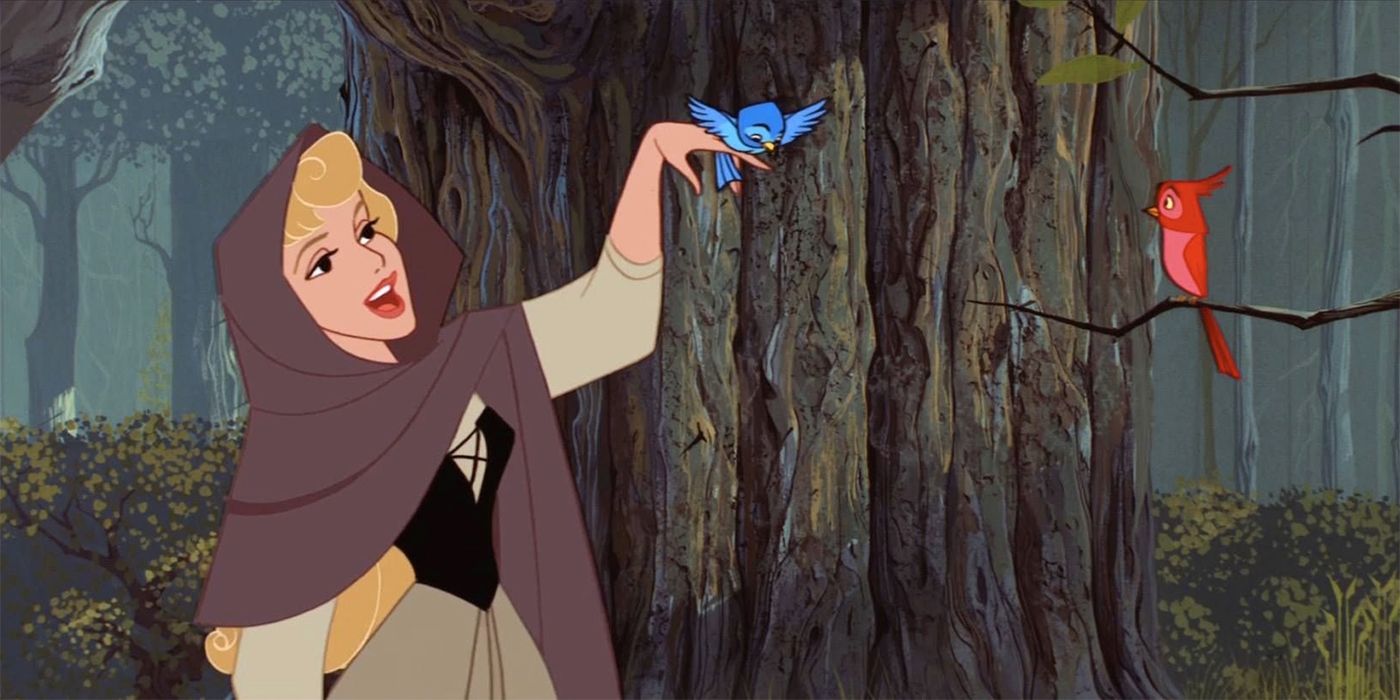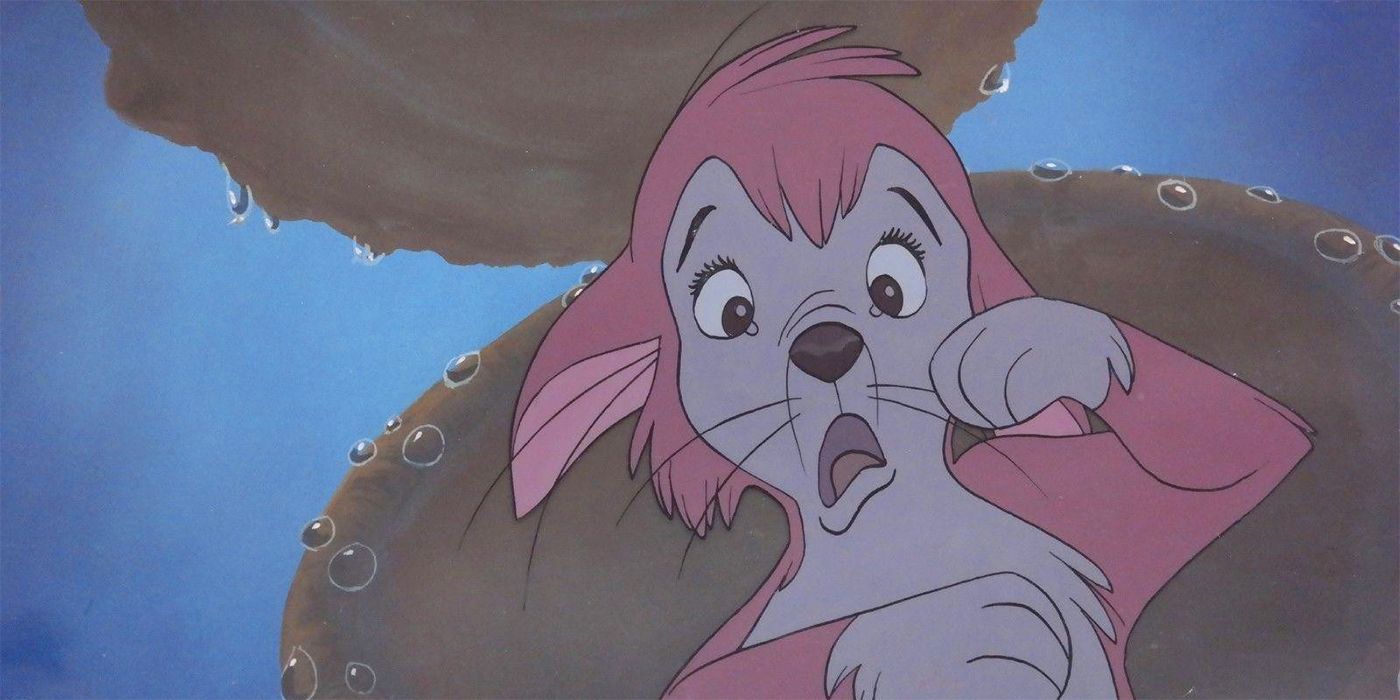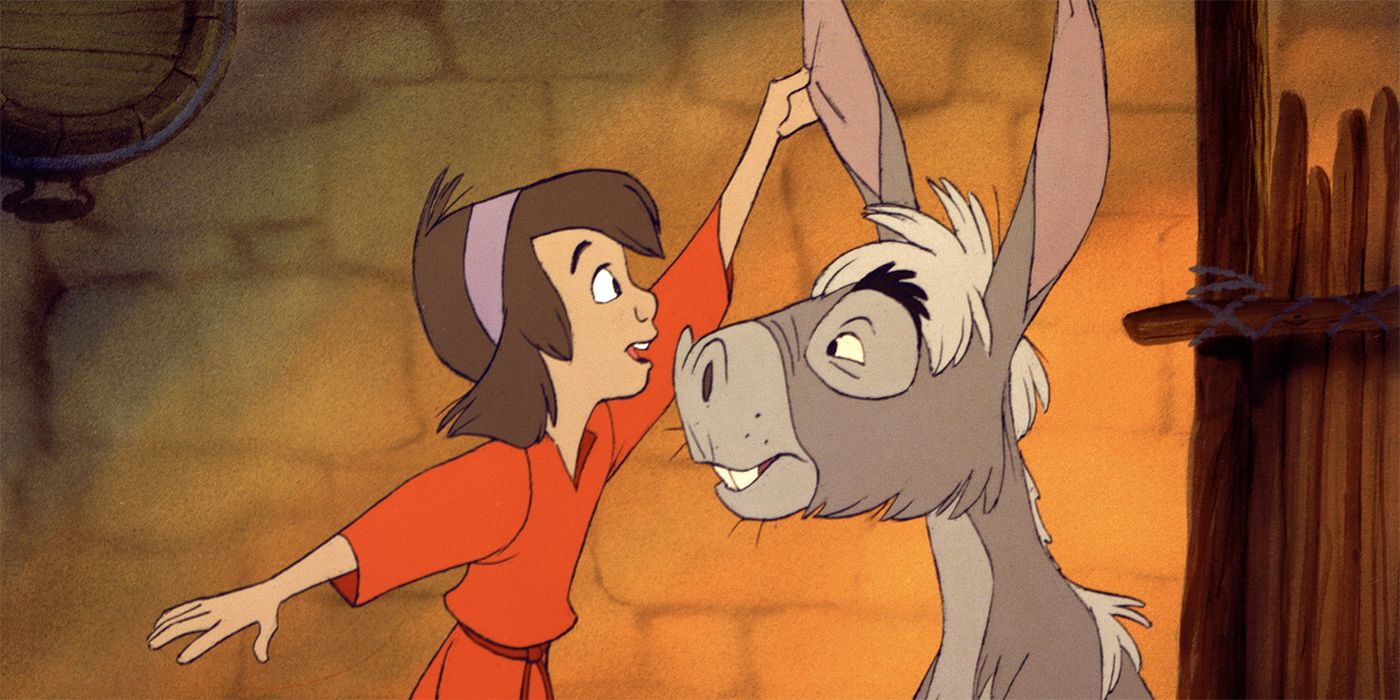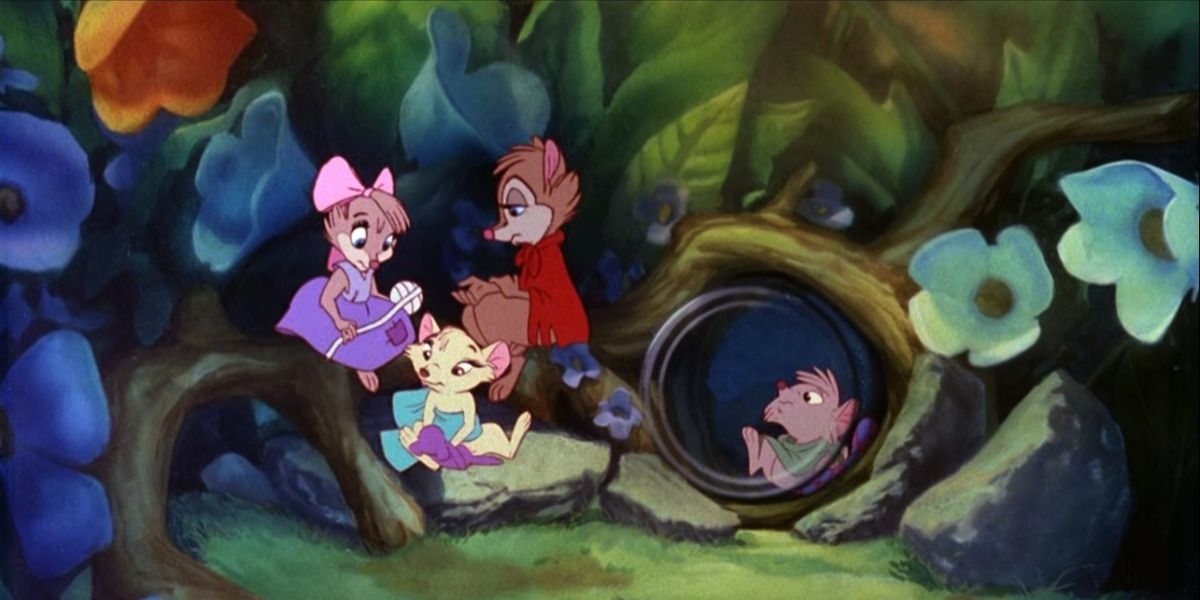The Art of Animation Drawing Don Bluth 12 Frame Run
It is hard to imagine a time when Disney Animation stood on the precipice of decline. Timeless cartoon classics from Snowfall White and the Seven Dwarfs to Encanto seem to bookend an historic period of film history that calls to mind words like innovation and success. Looking back, however, one may find it shocking that in 1979 a immature animator, hailed by many as the side by side Walt Disney, decided to abruptly leave and offset his ain studio. Over a dozen animators left with him in a mass resignation, and they left a hollowed-out Disney Animation in their wake. A disastrous fate seemed all but sealed. The animator in question? Don Bluth.
As the Greatest Generation entered their gilded years in the 1970s, so too did many of the original animators responsible for Disney'south massive success in the 1930s and onward. The remaining members of the Nine Quondam Men, a core of artists known for their pioneering piece of work nether Disney himself, were preparing for retirement. As their era came to a close, new artists were ushered in to selection upward where they left off.
Bluth arrived at the studio in 1956 at the historic period of 18 to work every bit an in-betweener on Sleeping Beauty for one of the Nine Old Men, John Lounsbery. He was responsible for the drawings that came betwixt keyframes in Lounsbery's blitheness. Bluth left Disney before long after to partake in religious mission work, just returned to the studio for summers through 1962 and rejoined full-time in 1971.

Bluth soon grew frustrated at Disney. He lamented that the process of making an animated film mystified him. "We didn't know how to create 'texture' in a film, to place a slow sequence next to a fast ane, or how you lot put a sorry sequence next to a happy 1," he remembered in On Animation: The Director'south Perspective Vol 2 . "We could merely practise individual scenes." He bemoaned the fact that animators couldn't fifty-fifty touch production equipment considering just union workers were allowed at the time. At one indicate he asked one of the Nine Quondam Men, animator Frank Thomas, how they fabricated the water effects in Fantasia appear then clear and realistic. Thomas responded, "You know, no one always wrote that downwardly." To that, Bluth recollected, "I was simply astounded."
In response to this, Bluth doubled downward on his study of animation product. It started as a pocket-sized filmmaking project in the garage of his home in Culver City. The offset iteration was The Piper , a curt blitheness based on a limerick written by Bluth's blood brother Toby. Afterward recognizing the flaws in The Piper, Bluth went back to the cartoon board on a new projection called Banjo the Woodpile Cat virtually a kitten who runs away and ends upwards on an adventure in Salt Lake City. In his pursuit of cinematic knowledge, Bluth enlisted other Disney animators to learn with him. These animators became known as "Bluthies," converts to Bluth's philosophy of animation. Among them were many of the studio's women animators, seeking a rare opportunity to learn well-nigh product. Bluth claimed that the women felt a sense of loyalty to him "because the atmosphere at Disney is sometimes oppressive to women." He continued, "For years, women take been assistant animators there, but they've rarely let them become higher."
As the Bluthies grew in number, and then too did their detractors. Animator Burny Mattinson started at Disney around the same time every bit Bluth in the 1950s and was amongst those invited to visit the makeshift garage studio. Mattinson was non charmed by the expanding Bluthie group, proverb in Walt'southward People Vol 12 , "Don was kind of a cool fish in a mode." He continued, "Bluth sort of built a clique upwards of just his people around him and really kind of isolated himself." Others at the studio were equally dubious. "His identification with the iconic Walt Disney was and so potent he even grew a sparse mustache and at one point affected a pipe," author and animator Tom Sito described in Cartoon the Line , "No one was certain whether Bluth was joking or not."

While Bluth was primed by Disney management to lead a new generation of animators, many of the younger artists at the studio became his biggest critics. A new crop of animators had recently arrived at the studio fresh out of the California Constitute of the Arts (CalArts). In 1975 Disney artists Ken Anderson, Marc Davis, and Eric Larson launched a program at CalArts that would allow the old guard at Disney to train a new guard of animators. They created the Graphic symbol Animation Plan, and shortly subsequently many of the graduates of that plan became Disney artists themselves. Larson also spearheaded a Talent Evolution Plan at Disney. With his prestige as one of the Nine Old Men, he guided new recruits and became a beloved mentor to many budding artists. Among his projects with his trainees was a Christmas short flick The Pocket-sized One , the project that would ultimately cement the clash between the Bluthies and the Non-Bluthies.
The Small One tells the story of a young male child who reluctantly parts with his treasured old ass. The sale of this ass ultimately plays into the story of the nascency of Jesus. Larson prepared to direct and began working with the immature trainees on the short motion-picture show. Then "in that location was a coup d'etat over the weekend," CalArts alum John Musker described. Larson was no longer in accuse, and he was existence replaced by Bluth. All the storyboards developed for the short had been stripped from the walls, and new model sheets were upwards in their stead. According to Mattinson, Head of Animation Don Duckwall told Larson, "Bluth has gone to [Disney CEO] Ron Miller over the weekend, met him hither at the Studio and has convinced him that he would be better to do this motion picture." Mattinson added, "Eric was almost in tears." Bluth claimed in later on interviews that he was actually appointed to work on the brusk and was stuck in the middle. "What a dilemma for me," Bluth stated in retrospect.
This change in leadership did not endear Bluth to the CalArts alumni, and they would soon become a thorn in his side. When Bluth came on to direct The Small Ane, all the trainees on the short were forced to jump through new hoops to prove themselves as adequate animators. A memo was sent to them which requested a grapheme animation sample that would display an emotion. "Whichever emotion yous select should be played honestly – become for sincerity or believability" the memo read. "Don't army camp or ham it up. The assignment is not for corn, merely honesty in acting." In a humorous show of defiance, fellow CalArts grad Brad Bird caricatured an image of himself onto this memo with a speech chimera that read, "Simply I like corn."

The factions were fix. The CalArts group was driven by humor and personality, and Bluthies were focused on technical fashion. Bluth was additionally pushing the idea of rotoscoping, which in animation involves using live-action reference footage of actors to trace action frame by frame. To the CalArts group, this took away all the creativity of their piece of work.
Ultimately, Bluth's goal for the studio was to return to the classic Disney repertoire. He claimed that he was drastic for his artists to "come upward to the quality we needed." This disconnect led another of the CalArts alumni Bill Kroyer to speak directly to Disney CEO Ron Miller. He expressed concerns about the direction the studio was going. Kroyer set up a screening for Miller introducing him to other styles of animation from outside the Disney company. When Bluth found out, he was livid.
Kroyer, along with Musker, Bird, and other artists Jerry Rees, Henry Selick, and Dan Haskett, shared next rooms in the famous D-Wing of the animation edifice. After Kroyer went to Miller, Bluth came down to see them. Musker recounted Bluth'due south words to the group: "This place is a rat's nest of rumor and allusion, and it'south got to cease." When they asked to collaborate more than, Bluth doubled down. "He basically said, 'The studio's built on a arrangement of kings and serfs. And guess what? Y'all're a serf.'" The CalArts group that shared that room came to adopt the moniker, and to this twenty-four hours jokingly refer to themselves as "The Rats' Nest."

With so much upheaval and a lukewarm review of The Small One past veteran Disney artist Woolie Reitherman, Bluth retreated from his work every bit a director at Disney. He refocused his effort on his garage project Banjo the Woodpile Cat. He even attempted to go Miller to back the project, but the studio caput turned him down. "By that time I knew that I was going to leave the Disney Studio," Bluth said.
Around the same time, Bluth'southward longtime collaborator Gary Goldman received a call from former Disney executive Jim Stewart, who was working on a new company called Aurora Productions. Word had gotten out that Bluth was unhappy at Disney and Stewart was interested in financing a new studio with him and producing an blithe characteristic moving-picture show. "Just weeks before this call, Ken Anderson had brought a book to my office chosen Mrs. Frisby and the Rats of NIMH ," Bluth said. The idea had been shot downwards by Disney, so Bluth pitched it as the outset feature of his new studio. After showing investors Banjo the Woodpile Cat, they officially secured the funding.
"I called a meeting for everyone who was working on Banjo and said, 'Guys, we're taking our brusk and leaving. We're not asking yous to leave, but you are welcome if you want to come up with u.s.a..'"
On September thirteen, 1979, Bluth's 42nd birthday, he officially resigned from Disney. Goldman recalled, "11 more artists resigned the following solar day and three more came aboard the following January." As Mattinson remembered, "[Bluth] had set it upward with all these different animation people. He had told each and every ane of them that he wanted them to come in one later some other into the boss' office (which was Ed Hansen at that time) to quit." He continued, "I guess he wanted to make information technology feel similar they were actually going to walk out, and they were going to cripple the Studio. Well, they walked out, just they didn't cripple the studio."

In the aftermath, Miller made a voice communication to Disney Animation staff which started with, "Now that the cancer has been excised…", expressing his frustration at Bluth's sudden departure. With and then many artists gone, the impact was felt at the studio every bit they worked to finish The Pull a fast one on and the Hound . As a upshot, the film's release was pushed dorsum half-dozen months from Christmas 1980 to summer 1981. Over at the Bluth studio, Mrs. Frisby and the Rats of NIMH was released as The Secret of NIMH , which was critically acclaimed, but a box office defeat.
The bad blood between the Bluthies and Disney withal persisted through the years. During an animators' strike in 1982, strikers from Bluth'south studio showed upward at the Disney studio gates dressed like characters from The Secret of NIMH. Sito described, "Every bit Disney CEO Ron Miller drove through the picket lines at Disney, young Bluth animator Dave Spafford leaped onto his car's hood, gave Miller the finger with both hands and shouted, 'Up yours, Football game Boy!'" Miller was a University of Southern California football player.
In the decades that followed, Bluth was responsible for many popular blithe films including An American Tail , The Land Earlier Fourth dimension , and Anastasia . His goal to "aid build the future of animation" came true in the form of teaching courses on animation to immature hopeful artists at the Don Bluth University. Bluth said his intention was not to injure Disney when he left the studio. As a outcome of leaving, however, he provided some necessary competition that challenged Disney to grow into one of the well-nigh prosperous eras in animation history: the Disney Renaissance. As Eric Larson said in response to his departure. "I welcome the contest. It'south what we need."
Well-nigh The Author
Source: https://collider.com/don-bluth-entertainment-inspired-a-disney-exodus/

0 Response to "The Art of Animation Drawing Don Bluth 12 Frame Run"
Post a Comment